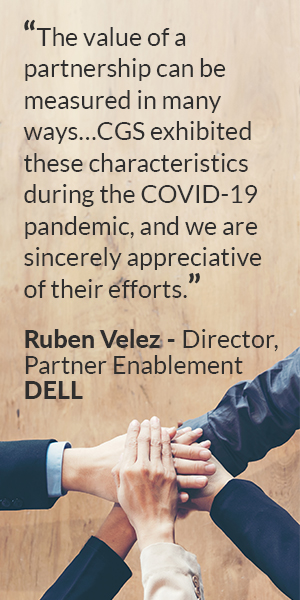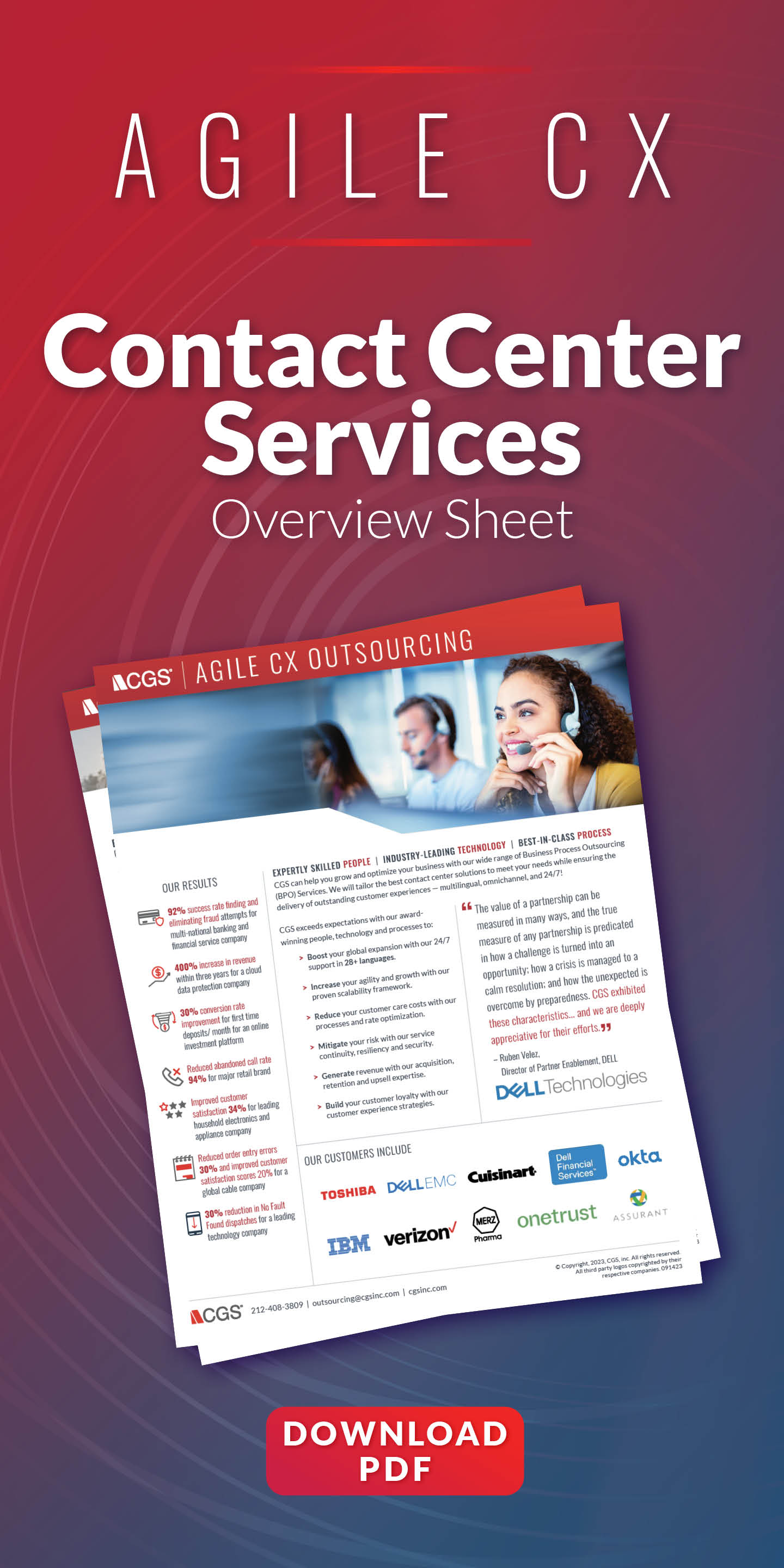REPORTING INNOVATION WITH ROBOTIC PROCESS AUTOMATION (RPA)

In 2019, CSG held its first annual Co-creation Innovation Summit bringing together 40 IT and business executives from all sectors of the company to identify, define and solve business problems.
The premier Summit led to a widespread initiative to use robotic process automation (RPA), as part of the company’s digital transformation plan, in its geographically dispersed locations throughout North and South America, Europe, Asia and the Middle East. CGS created a centralized center of excellence to provide guidance on how to adopt and deploy RPA.
CGS chose UiPath, a leading enterprise RPA software company, as a partner to provide a comprehensive automation solution for its global Outsourcing Services. Having an RPA solution frees up CGS support teams to focus on more complex needs and creating business value with RPA.
Robotic Process Automation is the use of virtual robots integrated with existing software that automate manual and repetitive tasks driven by simple rules and business logic.
Through the CGS reporting and RPA practice, the team identified target projects based on a set of optimal characteristics such as those with:
- High volume and handling time
- Process that takes place across many systems
- Chance for human error to cause reputational harm
- Manual and rule-based processes that need no decision making
- Standardized and mature processes that will not frequently change
- Fixed procedures must be followed
“When we started our journey, we looked at technologies and process automation areas that would be the most impactful to the organization. Even if the transaction volume is not there … there may be areas with potential quality issues," said John Samuel, executive vice president at CGS. "Those are great targets for us."
With a corporate RPA governance program and a centralized center of excellence to provide guidance in place, the RPA governance group identified a key area that was ripe for bot assistance in 2020 – reporting and data mapping. The team discovered that 250 management functions were actively involved in reporting processes across the organization on a daily/weekly/monthly basis. Many of the tasks required manual processes in Microsoft Excel utilizing formulas and macros. The CGS Romania team alone discovered 48 projects spanning 46 unique data sources that required 380-man hours weekly for reporting.
There was plenty of opportunity to centralize reporting under one reporting and RPA practice; so the Romania team’s projects were selected for a proof of concept that, if confirmed, would be rolled out globally. To achieve success, the expectation was for enough efficiency improvement to reduce support resource needs, allowing management teams to focus more time on quality, value-add activities. Eliminating errors from manual processes was also expected to increase the quality of reporting and reduce potential exposure to reputational risk. Shorter reporting times and a higher quality output would ensure an improved and more-consistent customer experience as management teams would be able to better plan for staffing needs as well as monitor quality to address necessary corrective actions immediately.
So far in 2020, the team has deployed unattended bots on 40 processes across nine different projects for data extraction and reporting. The unattended bots are scheduled to run at specific time intervals without human interaction, delivering the equivalent of 20 FTE in process time reduction.
One team that has benefited is CGS Romania’s Workforce Management team who are better able to analyze historical data and make more accurate forecasts, which allow for better staff scheduling and improved productivity.
With the end-to-end process now automated, the bots are refreshing data daily without human interaction. The team was able to integrate the reporting into dashboards that provide for customization that previously was not available. Team leaders, managers and executives can now see and interact with the data at any time. For example, managers may want to slice the data by looking at specific timeframes, comparing the current quarter with the previous one, or take a deeper dive into the results from specific teams.
The results showed just how powerful RPA can be. In the next phase, the team will be globally deploying this enhancement. This will give CGS the opportunity to spot greater trends across multiple clients and connections that are not “seeable” now.
Currently the data dashboards are available to internal CGS teams only and must be exported to share with clients whose reports have now been automated. In the future, the reporting and RPA team expects to offer clients dashboards of their own; these will consist of a set of standardized reports for self-service. The goal is to free up time for CGS teams to focus on more advanced custom reporting that is predictive and proactive instead of reactive. This will ultimately deliver more valuable insights to clients for continuous improvements in the contact center and beyond, as well as create better customer experiences for their consumers.



